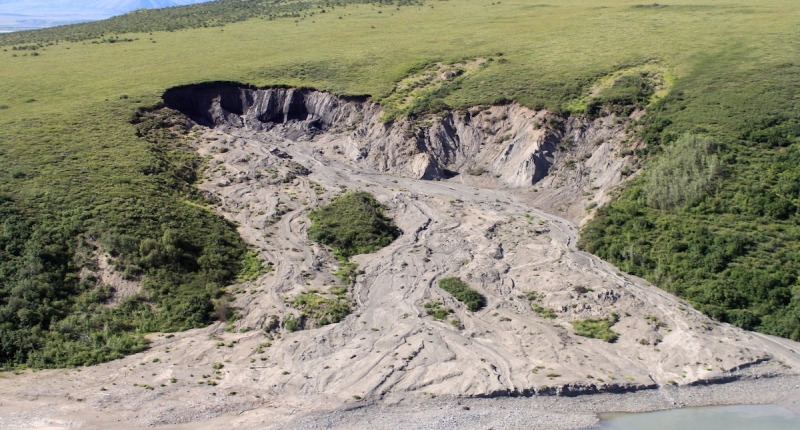Online Gateway to Aid Discoveries and Decisions about Arctic Change with Big Data and AI

A fourth of the northern hemisphere is covered in permafrost, and it’s melting, thanks to climate change. While this presents a lot to worry about, a new partnership is ready to help speed up solutions.
The National Science Foundation has awarded $3 million to a four-year collaboration of five scientific institutions – including the Arctic Data Center, which is operated by National Center for Ecological Analysis (NCEAS) – to create the Permafrost Discovery Gateway. This online resource will make data and other scientific information about the changing permafrost accessible and usable to industry, conservation organizations, and people who live and work in the Arctic.
The Permafrost Discovery Gateway will be positioned to inform policies and management actions to slow or adapt to permafrost melt in the Arctic. It will use machine learning and big data – or, rather, big imagery, as much of the data available on permafrost change is satellite imagery – to help scientists and other users get a bigger picture on the changes occurring in the Arctic, which can facilitate science-based decisions and actions for addressing them.
The Arctic Data Center will host the portal to these data under the oversight of Matt Jones and Amber Budden, leads of the NSF award to NCEAS. The project is led by Anne Liljedahl from the University of Alaska Fairbanks and includes researchers from University of Connecticut, Ohio State University, and the University of Illinois. Partnering institutions include the Alfred Wegener Institute, NASA, the Center for Climate and Health at Alaska Pacific University, and the Polar Geospatial Center at the University of Minnesota.
"The gateway will provide unique visualizations of the changes occurring across the Arctic," said Matt Jones, project co-lead and lead of the Arctic Data Center. "By enabling people to interactively explore the results of massive models of permafrost change, and the big imagery that drives those models, the Gateway will make critical science accessible to anyone that wants to understand Arctic change."
One of the reasons data and information about permafrost change is so hard to get may be obvious – it’s hard to get to the Arctic to measure and observe the changes. That’s why satellite imagery has been crucial to detecting the extent and rate of thaw.
The Gateway will also host information on phenomena such as coastal erosion, landslides, and thawing ice, along with maps of air temperature and precipitation.
The Permafrost Discovery Gateway will become an open repository of this imagery and existing data, allowing scientists to piece together this information to get a clearer understanding of just how much of the Arctic permafrost is thawing and where. New data visualization tools will help scientists translate imagery, maps, and other data into engaging ways to digest and use the knowledge they generate.
The project officially begins on November 1st, 2019, and an early version of the Permafrost Discovery Gateway will be available within a year. The research team will add features, refine the design, and populate the online resource as the project continues, while gathering user feedback to guide its evolution.
“I think it’s unlike anything out there,” said project lead Anna Liljedahl from University of Alaska Fairbanks. “Our combination of resources within the gateway can finally help people keep up with the rapidly changing Arctic landscape as it is transforming and at a scale that is relevant to people.”
Visit the Permafrost Discovery Gateway at https://permafrost.arcticdata.io/.
Read the original press release from University of Alaska Fairbanks.
